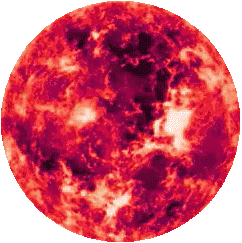
K2-18 Star System
The K2-18 Star System contains 1 Star and 2 Planets.
0 Planets are habitable candidates
The K2-18 Star System is located within near the inner rim of the Orion Arm, within the Local Fluff of the Local Bubble, between the Radcliffe wave and Split linear structures (formerly Gould Belt) in the Milky Way Galaxy, which is 26,000 light years away from the massive Sagittarius black hole at the center of the Galaxy.
/ Star & Planets / Stars & Planets List 101 to 150 Light Years / K2-18 Star System
728.996 Trillion Miles
124.0000 Light Years
38.0186 Parsecs
K2-18

M2.8 Class Dwarf
6,101 F Photosphere
Main Sequence
2.90 Billion Years Old
Strong Flares
1 AU = 92,955,807 Miles
Population I Star
Heavy Element Rich
Chemical Rocket Travel Time
1.24 Million Earth Years
Fission Rocket Travel Time
2,494.96 Earth Years
Fusion Rocket Travel Time
1,247.48 Earth Years
Laser Light Sail Travel Time
623.74 Earth Years
K2-18 Planets Probability to Host Life
K2-18 I: The chances of life on planet K2-18 I are considered extremely low due to its close proximity to its star, K2-18, which likely results in a hot surface temperature and tidal locking. This close proximity results in a likely surface temperature that is too high for liquid water to exist on the surface, which is a key requirement for life as we know it.
K2-18 II: The chances of life on K2-18 II are currently uncertain, with a recent study suggesting a 99.7% probability that a detected molecule, dimethyl sulfide, is from a biological source. There is a small chance of a statistical fluke or a previously unknown non-biological process creating this molecule. This same molecule on Earth is produced by microbial life. It has also been suggested that K2-18 II harbors a global ocean of liquid water with a hydrogen atmosphere.
Alternative analyses suggest that K2-18 II might be too hot for life, potentially a barren "mini-Neptune" with a lava ocean instead of liquid water. More extensive observations from the James Webb Space Telescope are needed to confirm the presence of dimethyl sulfide and determine whether it originates from life or other non-biological processes.

Join the Exo Solaria Union
Help aid in UAP research, Stay informed on the UAP phenomenon, and to help push the United States government for full disclosure regarding UAP and alien species.


